“Detoxing” is quite a buzzword these days, and like most things that become popular with Instagram influencers and celebrities, it has also come under a lot of scrutiny. It’s almost like a dirty word now, with people rolling their eyes when you say, “I’m doing a detox”. And I get it. A lot of the “detoxes” that are out there popping up on social media aren’t really going to do very much. Many of them centre around teas or supplements of some sort, and while they may temporarily have an effect, such as stimulating bowel movements, the results will only last while you’re taking whatever it is. The packaging on these “detoxes” often states that they shouldn’t be taken for an extended period of time, so their effects will definitely be short term. It’s no wonder that detoxing has started to be written off as a sham and a way for unattainably fit and bronzed social media moguls to make money off of the rest of us.
Many deny the benefits of increasing detoxing beyond what your body naturally does on its own, and maybe this would have been true centuries ago when our toxic exposure was much lower or in a perfect world with perfect people who don’t have any genetic weaknesses when it comes to detoxing, but that is simply not the case for today’s world. Study after study is showing that we are living in an increasingly toxic world that is putting us under a heavier and heavier toxic burden. Every day we are exposed to substances and chemicals such as heavy metals, air pollution, xenoestrogens, and pesticides that can impair our cellular function [1, 2, 3]. One study even showed that every person sampled had some level of persistent organic pollutants in their body [4]. When we consider that cancer is composed of abnormally functioning cells, it becomes clear why toxic burden is of such concern to those of us healing from or wishing to prevent cancer.
Did you know that I put exercising under the category of detoxing when it comes to cancer? Yes, exercise is good for our muscles, great for our heart, and it can even boost the immune system, but when it comes to healing and preventing cancer, one of its biggest benefits is in supercharging your detoxing pathways. We have 5 main detoxing pathways (the lungs, skin, liver, kidneys, and colon), and exercising helps to optimize ALL of them.
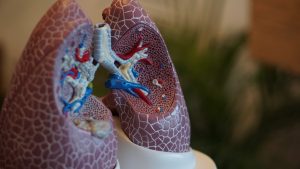
1. The Lungs
When we exercise, we breathe deeper and more heavily. This helps to open up our lungs and boost their natural filtering activity, moving CO2 out of our body and O2 into it much faster. It may even help to clear out bacteria and viruses from our lungs more effectively, helping out our immune system [5]. Studies have also shown that exercise improves blood flow to the lungs, which in turn allows the body to move more toxins to the liver and kidneys where they are filtered out of our blood and removed from our bodies [6].
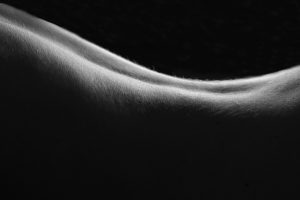
2. The Skin
We all know that exercising causes us to sweat, and as annoying or embarrassing as that can be, sweating is super important and another reason besides aluminum to stay away from antiperspirants. It surprised me when I discovered that our skin is included as one of our main detoxing pathways, but once I learned why, it made a lot of sense. When our body becomes overburdened with toxins, as is happening increasingly these days, the liver and the kidneys can’t handle it all. Excess toxins get stored in the fat and one way our body gets rid of them is by burning that fat and partially sweating out the toxins stored there [7]. Exercise obviously helps with both of those!
When we sweat, it opens up our pores, making that excretion easier, and the sweat itself helps to carry toxins out, making that excretion more effective. This is especially the case with heavy metals. A review of the research found that in people with higher toxic burdens, the levels of arsenic, cadmium, lead and mercury in their sweat generally exceeded blood plasma or urine concentrations. Additionally, their skin could match or surpass urinary secretions, meaning that the skin was as effective or more at excreting these heavy metals from their bodies [8]. It is imperative that you shower after heavy sweating during exercise or a sauna, otherwise your skin will just reabsorb what you both just worked so hard to excrete [7].
A side note here, our skin is our biggest organ and it is porous. We haven’t been able to definitively determine how much of what we put on it is actually absorbed into our skin and bloodstream, but we know that the skin is somewhat porous, and so it’s always possible that some of what goes on it is getting absorbed. I use my better-safe-than-sorry rule of thumb here; with my history of cancer, why would I risk it and potentially add more chemicals into my body? For this reason, I think it’s also very important to use clean home and beauty products like skincare, makeup, and detergents.
3. The Colon
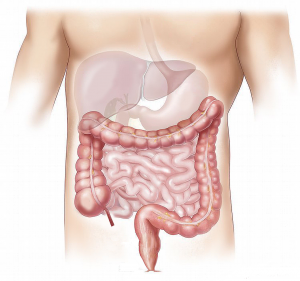
Our digestive tract is probably our most important detoxing pathway. Along with eliminating the toxins in food waste, our colon works with the liver to dispose of the toxins there as well. In addition to breaking down fats, bile produced by our liver and stored in our gallbladder is like a sponge for toxins, and it’s where the liver stores toxins it has filtered out from our body such as excess hormones, heavy metals, and chemicals. The liver empties the gallbladder and dumps bile right into the intestines to exit the body in our, well…💩 So, our colon is pretty important to detoxing!
While exercising, our heart rate increases and so does blood flow towards the muscles and digestive tract [9]. This can help to stimulate peristalsis, the natural contractions of our intestines and colon that help to move waste and toxins through the digestive tract and out of our body. Conversely, when you exercise less, your intestinal tract tends to slow down as well [9]. By stimulating this movement, exercise is helping toxins to be moved through this major detoxing pathway. Get outta here!
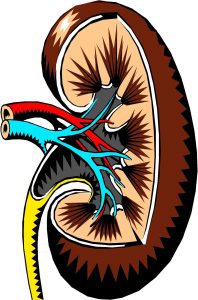 4. The Kidneys
4. The Kidneys
Above, we were discussing how exercising helps the lungs do their detoxifying job more effectively. One of those ways is by increasing blood flow to the lungs and allowing more toxins to be moved to the kidneys to be processed out of our bodies. This is the first way that exercise supports the detoxification role that our kidneys play. The second is that exercise supports overall kidney health. In a study done with patients who had chronic kidney disease, exercise showed clear benefits when it came to kidney health. Researchers found that, “12 months of exercise-based rehabilitation significantly slowed the rate of kidney function decline and improved cardio-respiratory fitness compared with standard care” [10]. And healthy kidneys are happy, properly-detoxing kidneys!
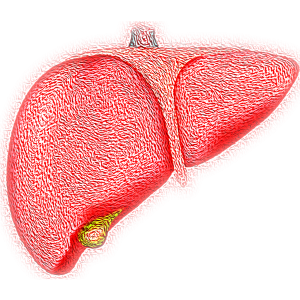
5. The Liver
The liver is probably the go-to organ we think of when considering our natural detoxing pathways. We’ve all lamented our “poor liver” after a particularly rowdy night at university. And it’s true, our liver does take on much of the detoxing burden. As I discussed earlier, it didn’t have as much to deal with in days past, but in our modern world of almost constant toxic bombardment, it needs more support to do the job effectively. Exercise can support our liver’s natural detoxing activity in two important ways.
Firstly, exercise strengthens your heart, allowing it to pump blood more effectively and efficiently through your body. This makes it easier for your heart to get blood to your liver where toxins can be effectively filtered out. This improved blood circulation also makes it easier for your liver to then send that filtered blood back out into your body [11]. Secondly, exercise prevents the buildup of excess body fat, and excess body fat can lead to a fatty liver and a medical condition called nonalcoholic steatohepatitis (NASH), which in turn can lead to your liver becoming nonfunctional [11]. Not only can exercise help to prevent NASH, but if fatty liver disease does occur, exercise can help to reverse it. A review of the evidence from multiple studies concluded that exercise is proven to improve fatty liver disease and that, “[…] exercise increases fatty acid oxidation, decreases fatty acid synthesis, and prevents mitochondrial and hepatocellular damage through a reduction of the release of damage-associated molecular patterns” [12].

Bonus! The Lymphatic System
And finally, exercise is extremely important to a healthy lymphatic system and optimal lymphatic flow. Our lymphatic system has fluid just like our circulatory system, however our circulatory system has our heart to help pump that blood through it. Our lymphatic system has no such help, and so it relies mainly on our breathing and the movement of our body to move its lymph fluid through. This is why there is such a concentration of lymph nodes in our armpits, neck, and groin; these are our major joints, and they see the most movement throughout the day.
The lymphatic system is particularly important when it comes to cancer for two reasons: its role in immunity and its role in detoxification. Our lymph fluid contains immune cells whose job it is to find and destroy abnormal cells (like cancerous and precancerous cells) as well as pathogens and harmful substances. Our lymph nodes filter the fluid and drain it back into the bloodstream before it is carried to our kidneys and liver, where the harmful substances and pathogens are filtered out of the blood and processed out of our bodies [13]. The lymph system is a part of how our bodies recognize and attack cancer cells and also how they remove harmful substances from our bloodstream, so it’s health and optimal performance are paramount.
As I mentioned earlier, the lymphatic system doesn’t have a heart like the circulatory system, so its flow is instead stimulated by moving your muscles and increasing your heart rate, the contraction of your muscles acting as the pump that moves the lymph fluid through your body. In this way, “Exercise can help the lymphatic system flow more effectively and potentially help prevent infections and other diseases, like cancer” [13]. Underwater exercise like water aerobics or swimming amplifies this effect thanks to the added water pressure, which is just the right amount to help stimulate lymph flow as well.
….
Exercise is so good for us for so many reasons including improved cardiovascular health, stamina, and joint and muscle health. But when it comes to cancer, exercise is even more important for the role it plays in supporting our body’s natural detoxing pathways. After I had finished treatment and achieved my NED status, my naturopath told me that exercise would be the most important factor in maintaining that status and preventing a recurrence. The MOST important! I was surprised at first, but after learning all that exercise does to support our body, our detoxing, and our immune system, it was clear to me why it is so important.
It doesn’t matter what type! A mix of aerobic and resistance training is a good idea, but something is better than nothing. Whether it’s walking, hiking, yoga, swimming, weight training, or anything else, find a type of exercise that you really enjoy, or at least enjoy enough to maintain regularly, and run with it! No pun intended 😛
Happy Healing ❤️
References
- Chemical Trespass – http://www.pesticideresearch.com/site/docs/ChemTresExSumEng.pdf
- Dioxins and dibenzofurans in adipose tissue of the general US population and selected subpopulations – https://pubmed.ncbi.nlm.nih.gov/8129062/
- Epigenetic effects of environmental chemicals bisphenol A and phthalates – https://pubmed.ncbi.nlm.nih.gov/22949852/
- Levels in the US population of those persistent organic pollutants (2003-2004) included in the Stockholm Convention or in other long range transboundary air pollution agreements – https://pubmed.ncbi.nlm.nih.gov/19320182/
- Exercise and immunity – https://medlineplus.gov/ency/article/007165.htm
- Can You Really Detox Your Lungs? – Lung Health Instititute – https://lunginstitute.com/blog/can-you-really-detox-your-lungs/
- Detoxing through sweat: What the science says – https://www.wellandgood.com/science-backed-detox/
- Arsenic, Cadmium, Lead, and Mercury in Sweat: A Systematic Review – https://www.hindawi.com/journals/jeph/2012/184745/
- Boost your digestive health through exercise for digestion – https://www.copemanhealthcare.com/resources/digestive-health-exercise#:~:text=Exercising%20increases%20blood%20flow%20towards,gas%2C%20stomach%20cramps%20and%20constipation
- Chronic kidney disease: Exercise provides clear benefits – https://www.sciencedaily.com/releases/2014/11/141115083118.htm
- The Effect of Exercise on Liver Function – https://www.livestrong.com/article/287774-the-effect-of-exercise-on-liver-function/
- The Effects of Physical Exercise on Fatty Liver Disease – https://www.ncbi.nlm.nih.gov/pmc/articles/PMC5954622/
- Exercise and the lymphatic system – https://www.mdanderson.org/publications/focused-on-health/exercise-and-the-lymphatic-system.h20-1592991.html

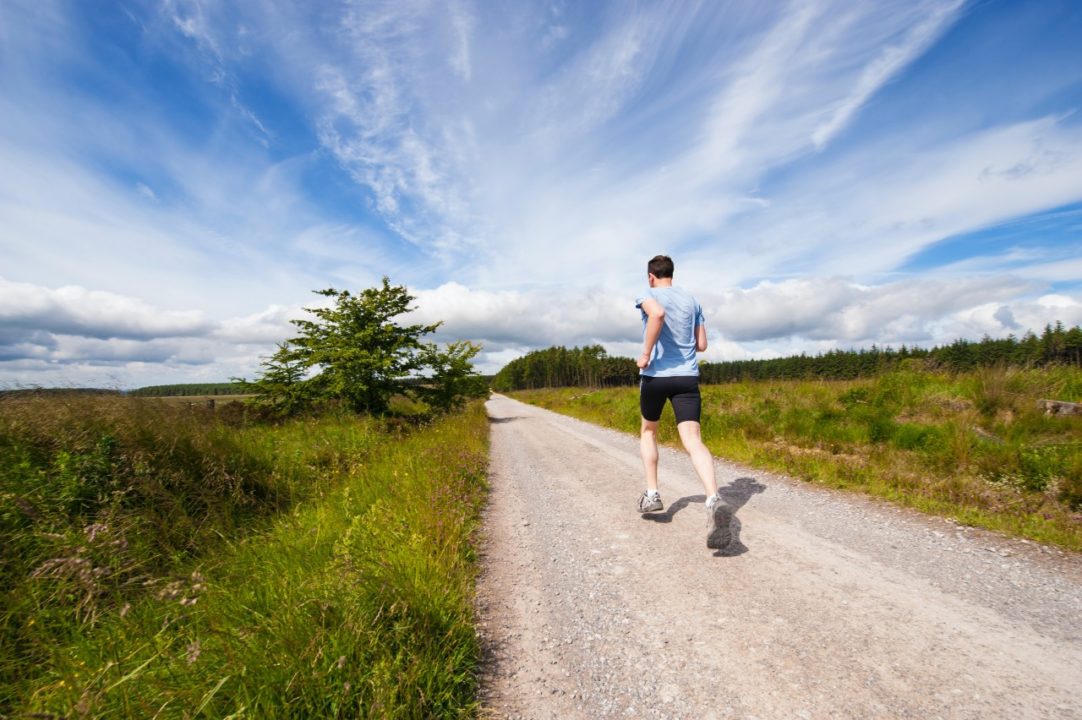


0 Comments
Trackbacks/Pingbacks